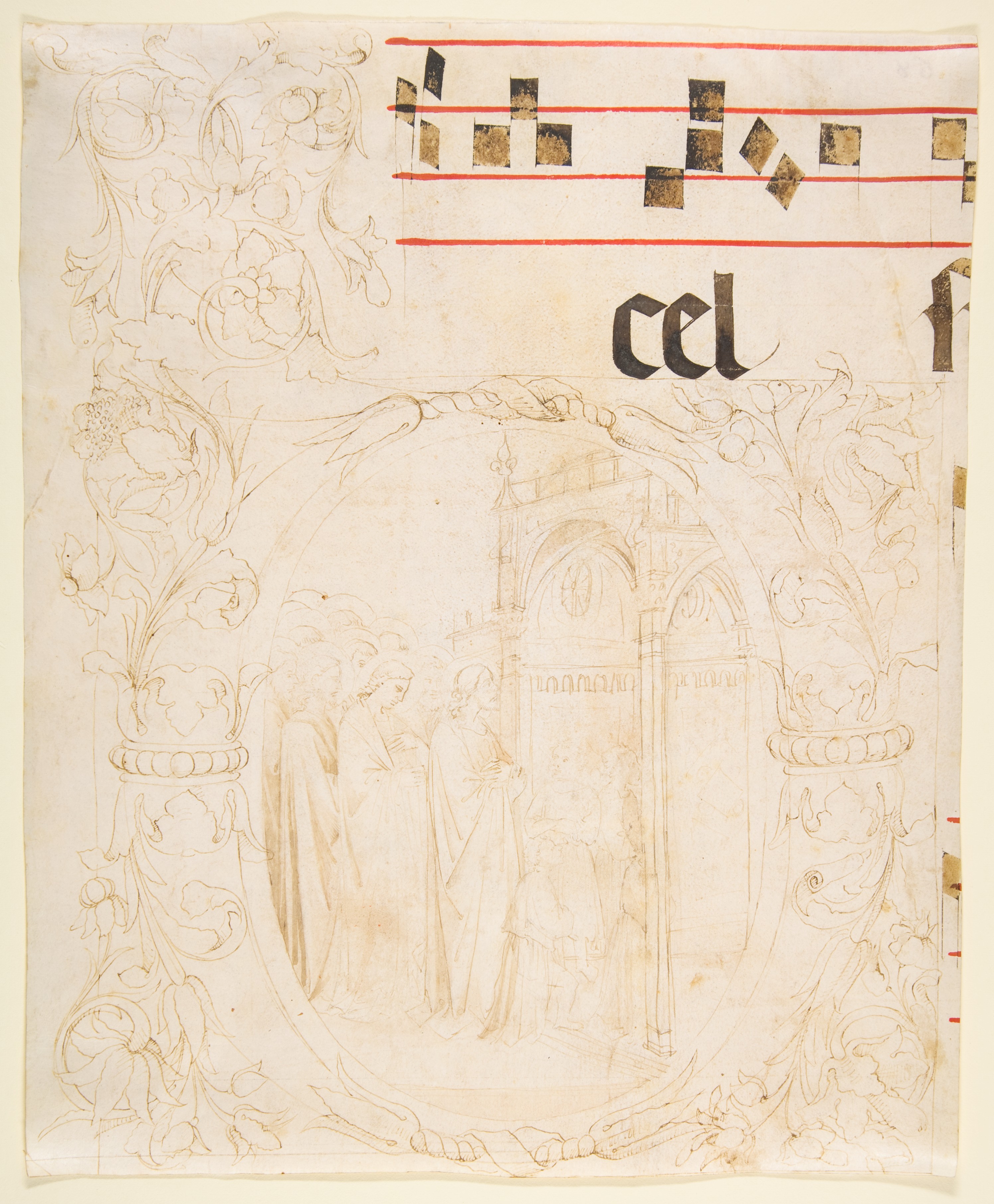Javascript must be enabled to continue!
Decorated Initial with Scene of Christ Entering the Temple.
View through The Met
Pen and pale grayish brown ink brush and pale grayish brown wash (figural scene) pen and pale brown ink over construction in leadpoint ruling and compass work (ornamental parts) ruled lines in red ink notes and words in pen and dark brown ink (musical score) on vellum
Drawings and Prints, Metropolitan Museum of Art New York NY, Purchase Lila Acheson Wallace Gift 1999
Title: Decorated Initial with Scene of Christ Entering the Temple.
Description:
Pen and pale grayish brown ink brush and pale grayish brown wash (figural scene) pen and pale brown ink over construction in leadpoint ruling and compass work (ornamental parts) ruled lines in red ink notes and words in pen and dark brown ink (musical score) on vellum.
Related Results
Tobacco pouch
Tobacco pouch
"362-22" "Two Bears Band, Fort Rice.″Yanktonai pipe bag; wool, glass, porcupine quills; l. 43.5/73 cm., w. 16.5 cm.; ca. 1860s.″Documentation: \Two Bears band, Fort Rice.‖ Purchase...
Nestoris (two-handled jar) with Mythological Scenes
Nestoris (two-handled jar) with Mythological Scenes
Red-figured Lucanian Type II nestoris. Broad ring foot with mid-length stem. Body flares from stem, rounds up, and turns in sharply to form a relatively narrow, flat shoulder. Neck...
The Risen Christ
The Risen Christ
This panel depicting The Risen Christ was formerly in the collection of the Pusterla della Porta family in Milan, where it is recorded from 1590 until the first quarter of the 20th...
Ceremonial tobacco pouch
Ceremonial tobacco pouch
Pipe bag; Lakota; ca. 1870-1880 \nHide, glass beads, porcupine quills, pigments; l. 40 cm. (incl. fringe); w. 13 cm.\nRMV 3158-9; purchased from art dealer Leendert Van Lier, Amste...
Column Krater (mixing bowl for wine and water): Theseus and Poseidon; Musician and Audience
Column Krater (mixing bowl for wine and water): Theseus and Poseidon; Musician and Audience
On one side: the Athenian hero Theseus visits his divine father Poseidon. Theseus’s mother was Aethra, and ancient sources sometimes consider him to be the son of her husband, Aege...
Christ with the Cross
Christ with the Cross
Christ holding the cross was a motif that El Greco derived from the narrative of Christ’s Passion, creating an isolated image that seems to have been extremely popular with his cli...
Tobacco pouch
Tobacco pouch
Tobacco, smoking, ritual, pipes, tobacco bags Tobacco was a stimulant used by the indigenous people in large parts of North, Central and South America as a sedative, medicine again...
Booties for mannequin
Booties for mannequin
"(Western?) Apache moccasins for a doll; buckskin, sinew, glass beads; l. (of sole) 5 cm., h. 9 cm., w. 2.5 cm.; ca. 1880.\These beaded miniature high-top moccasins with toe tabs a...




